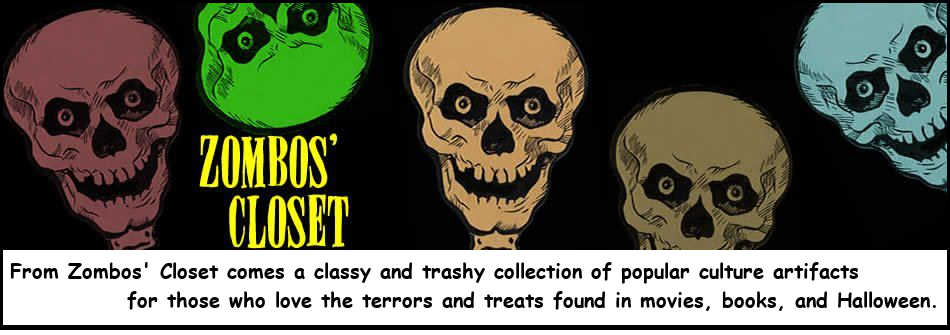 My review for Les Femmes Grotesques, by Victoria Dalpe, first appeared in The Horror Zine. Please go there to see more reviews by me and other staff book reviewers as well as fiction, poetry, and art by many of today's established and up and coming horror-creatives. This review is reposted with permission.
My review for Les Femmes Grotesques, by Victoria Dalpe, first appeared in The Horror Zine. Please go there to see more reviews by me and other staff book reviewers as well as fiction, poetry, and art by many of today's established and up and coming horror-creatives. This review is reposted with permission.
Emptiness is the keystone of horror. From it are built all the monsters and victims in both cinema and literature, old and new to come. Any reviewer of horror stories, whether short stories or novels or collections of tales, looks to see how an author embraces that void. When the grotesque is involved, the challenge becomes where that emptiness begins and how it intrudes into the commonplace, or presumed commonplace. Is the person really grotesque or the environment or both? Victoria Dalpe, in Les Femmes Grotesques, an assortment of tales to bother you in the wee darker hours of the day, gives her victims a solid balancing pole on their hi-wire act between the grotesque and the emptiness with aplomb.
While I could prattle on about the eighteen stories unfolded within, the long and short of it can be explored in a careful sampling of just a few, beginning with Folded into Shadows.
I often look for the stories in an author’s collection that would make for good novels or screenplays. Folded into Shadows gets my top vote. There are many haunted house tales to keep you busy until doomsday, but only a bunch will give you the chilly embrace of the otherness, the alien landscape hinted at, the mystery of what’s it? that makes the little hairs on your arms stand up.
From real-life spooky places like Borley Rectory and Waverly Hills Sanatorium to the fictional Hill House, the Tremaine House in Folded into Shadows fits the bill perfectly. Its notoriety: people seem to either die outright or disappear inside with unusual regularity. Agnes’s brother died in the house and she returns, with a production crew, to film the renovation of the house. The grotesque situation for her is that the house appears to not like being renovated and is not cheerful with the workmen knocking about its walls. She bought it, “a house where it seems always dusk,” but has her doubts. Her emptiness of knowing exactly what happened to her brother, and the numerous others, warps her life. Either she will solve the mystery or become part of it. If you like classic haunted house tales, this one is for you.
If you are a reader who knows who Arthur Machen was, well, The Guest is best read with a nice cup of tea. I cannot say for sure that Dalpe is up on her classic (and mostly forgotten) authors, but I will say that an infatuation with moss leads Angeline, at age seventeen and already missing something in her life, to meet Mr. Lich, a strange house guest. Both become inseparable, and therein begins the grotesque relationship that ends beautifully. For some. Here, the paragraphs are longer, the narrative in first-person, and the pacing quite mindful of an earlier time for storytelling.
The first-person narrator in Big Rash is a working woman who works truck stops: “not old, but I’m no spring chicken.” Looking for greener pastures, she happens on the town of Sanctuary. A trucker warns her that there’s something not quite right with the place, but she smells money as thick as the oil the town has tapped into. She rents a hotel room and sets up shop. The men smell of oil and something else, but the payout is too good to pass up. Until people start showing up with odd rashes, that also start appearing on her. Something is not quite right in the town of Sanctuary, but her emptiness—the need to make a living—and the grotesqueness of what is happening to her and the town may not be enough to make her leave. But will it be too late even if she does?
Mabel Gray drowned and wanted company in The Drowned Siren. Unfortunately for the narrator of this tale, which moves between classic ghost story and Japanese yokai-styled horror, she keeps hearing a voice that would gladly lead her to doom in the water. There’s even a commemorative plaque on the bench by the sea where Mabel drowned. Terry, a local expert on the tragedy of Mabel Gray, gives our targeted victim some sage advice. It will either save her or make her look awfully foolish as she drowns in Mabel’s wet embrace. I’ll give you one hint: rusalka. When her waking and sleeping hours are filled with that inviting, yet sinister, voice, will she follow that advice?
The old mill building, a grotesque structure in itself, is not empty. Within A Creak in the Floor, A Slant of Light, people live in their divvied-up spaces within its walls and floors. Mostly keeping to themselves, they do not seem to mind that some of their neighbors have gone missing. Charlie Chan (not the fictional detective by Earl Derr Biggers) arrives at the old mill to find his friend Pete is missing too. Chan soon meets the various oddballs living there and also learns about the weird happenings going on, like unseen things biting people in the elevator that barely works. A whole Goth band, the PitRats, went missing too, so you know the situation is serious. There’s a bit of Lovecraftian devilment going on through the sewer drains and the basement, but exactly what, Charlie is not sure. Me, I would stay out of the basement if I were him. While most of the action takes place through dialog and hearsay, it builds to a definite conclusion for Charlie.
I breezed through only five stories in a collection of eighteen. My favorites may vary from yours, but here is the skinny. Ms. Dalpe does not dabble in sub-genres, she excels at them, delivering deft performances of terror ranging from the ghostly to the pit-dwelling terrors to the monsters, demons, and gods dressed in ordinary surroundings. Her feminine grotesques are either a little different or a lot, a little bad or a lot, lost or, unfortunately, found. Their emptinesses will either keep the darkness away or let it in, but it is their call (more or less). You can take these stories at face value or dig a little deeper to find the hidden bodies of meaning. Whichever way you choose, go for it.
